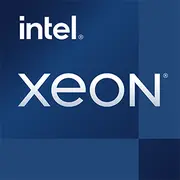Intel Xeon E3-1505M v6

인텔 제온 E3-1505M v6: 하이브리드 작업 시대의 전문가를 위한 프로세서
2025년의 가능성, 활용 시나리오 및 적합성 분석
아키텍처 및 기술 프로세스: 신뢰성의 기반
코드명 및 기술
2017년에 출시된 인텔 제온 E3-1505M v6 프로세서는 Kaby Lake 아키텍처(14nm)를 기반으로 하여 모바일 워크스테이션을 위한 틈새 솔루션으로 남아 있습니다. 나이가 있지만, 안정성과 전문화된 기능이 요구되는 작업에 필요한 주요 기능이 여전히 유효합니다.
코어, 스레드 및 주파수
- 4코어 / 8스레드, 하이퍼 스레딩 지원.
- 기본 주파수: 3.0GHz, 터보 모드에서의 최대 주파수 — 4.0GHz (하나의 코어 기준).
- 내장 그래픽: 인텔 HD 그래픽스 P630, 기본 주파수 350MHz, 동적 오버클럭으로 최대 1.1GHz.
아키텍처의 특징
- ECC 메모리 지원 — 데이터 오류가 허용되지 않는 워크스테이션에 필수적입니다(예: 렌더링 또는 과학적 계산).
- 기업 보안을 위한 vPro 및 Trusted Execution 기술.
- 8MB L3 캐시, 멀티 스레드 시나리오에서 성능 개선.
전력 소모 및 TDP: 성능과 자율성의 균형
프로세서의 TDP는 45W로, 성능이 뛰어난 모바일 CPU에서 일반적입니다. 그러나 2025년에는 AMD 라이젠 7000/8000(5-6nm) 또는 애플 M3(3nm)와 같은 최신 칩들이 TDP 15-28W를 기록하고 있어 다소 높은 수치로 보입니다.
사용자에게 의미하는 바는?
- 이러한 프로세서를 탑재한 노트북은 효과적인 냉각 시스템이 필요합니다(두 개의 팬 및 구리 파이프).
- 컴팩트한 케이스(예: 울트라북)에서는 장시간 부하에서 스로틀링이 발생할 수 있습니다.
성능: 벤치마크 및 실제 작업
Geekbench 6에서의 평가:
- 싱글 코어: 1244 — 인텔 코어 i7-7700HQ 수준.
- 멀티 코어: 3856 — 라이젠 5 5500U(6코어, 15W)와 유사.
사무 작업 및 멀티미디어
- 크롬에서 20개 이상의 탭 + 오피스 365 + 프리미어 프로에서 배경 렌더링 비디오 — 프로세서는 작업을 수행할 수 있지만 장시간 부하에서 온도가 85-90°C에 도달합니다.
- VLC 또는 유튜브에서 4K 비디오 재생 — iGPU 로드가 70-80%, 부드러운 재생.
게임
- CS2: 720p, 낮은 설정 — 60-70 FPS.
- 사이버펑크 2077: 720p, 최소 설정 — 25-30 FPS (DLSS/FSR 없음).
결론: 게임을 하기에는 프로세서가 부족하지만, 요구 사항이 낮은 프로젝트나 클라우드 서비스에서의 스트리밍에는 적합합니다.
터보 부스트 모드
짧은 부하 시(예: AutoCAD에서 무거운 프로젝트를 열 때) 주파수가 4.0GHz로 상승하지만 20-30초 후 과열로 인해 3.5GHz로 감소합니다.
사용 시나리오: Xeon E3-1505M v6는 누구에게 적합한가?
1. 엔지니어 및 디자이너:
- SolidWorks, AutoCAD — ECC 메모리 지원으로 오류 위험을 최소화합니다.
- Keyshot에서의 렌더링 — 4코어가 소규모 프로젝트에 충분합니다.
2. IT 전문가:
- 로컬 서버, 가상화(VMware, VirtualBox) — vPro 기술로 원격 관리가 용이합니다.
3. 사진 및 비디오 그래픽 사용자:
- Lightroom, DaVinci Resolve — 프로세서는 1080p 편집을 처리할 수 있지만 4K 작업에는 별도의 GPU(예: NVIDIA Quadro)가 필요합니다.
적합하지 않은 경우:
- 게이머: Ryzen 7 7840HS와 RTX 4060이 탑재된 노트북이 더 나은 선택입니다.
- 자율성을 중시하는 사용자: 최신 울트라북은 애플 M3 또는 인텔 코어 울트라 7로 1.5-2배 더 오랜 사용이 가능합니다.
자율성: 노트북은 얼마나 버틸까?
일반적인 부하(브라우저, 오피스 앱)에서:
- 56Wh 배터리를 갖춘 노트북 — 4-5시간 지속.
- 비교: Dell XPS 13 (2025) Core Ultra 7 155U — 최대 12시간.
전력 절약 기술
- 인텔 스피드스텝 — 주파수 동적 관리.
- C-States — 사용되지 않는 코어 비활성화.
하지만 14nm 아키텍처는 최신 칩보다 효율성이 떨어집니다.
경쟁자 비교
AMD 라이젠 프로 5755G (2023)
- 6코어 / 12스레드, 7nm, TDP 35W.
- Geekbench 6 멀티 코어: ~5200.
- 장점: 성능과 전력 소모의 우수한 비율.
애플 M2 (2024)
- 8코어 (4+4), 5nm, TDP 20W.
- Geekbench 6 멀티 코어: ~8900.
- 장점: 뛰어난 자율성, macOS와의 통합.
인텔 코어 울트라 7 165H (2025)
- 16코어 (6+8+2), 인텔 4nm, TDP 28W.
- Geekbench 6 멀티 코어: ~12500.
- 장점: 신경망 작업을 위한 AI 가속기.
결론: Xeon E3-1505M v6는 성능과 효율성에서 뒤처지지만, 틈새 기능(ECC, vPro)에서는 우위를 점하고 있습니다.
장단점
강점:
- ECC 메모리 지원 — 전문가 작업에 대한 신뢰성.
- 오랜 부하에서도 높은 안정성.
- Windows 10/11 및 Linux와 호환.
약점:
- 구식 14nm 기술 공정.
- 높은 전력 소모.
- 싱글코어 성능 제한(코어 울트라 7보다 30% 낮음).
노트북 선택 추천
장치 유형:
- 모바일 워크스테이션: Dell Precision 5520, HP ZBook 15 G4.
- 프리미엄 비즈니스 노트북: Lenovo ThinkPad P51.
유의할 점:
1. 냉각: 최소한 두 개의 팬.
2. RAM: ECC 지원 32GB DDR4.
3. 디스플레이: 디자인을 위한 100% sRGB 발색을 가진 IPS 패널.
4. 포트: 외장 GPU 연결을 위한 Thunderbolt 3.
2025년 가격:
- Xeon E3-1505M v6를 탑재한 새 노트북은 희귀하지만, 잔여 재고는 $1200-1500에 찾아볼 수 있습니다(예: Quadro M1200이 탑재된 Dell Precision 5520).
최종 결론: 프로세서가 적합한 이들
2025년 인텔 제온 E3-1505M v6는 다음과 같은 고급 전문직에게 적합한 선택입니다:
- 신뢰성: ECC 메모리 및 기업 기능.
- 호환성: 인증된 컴포넌트를 필요로 하는 전문 소프트웨어와 작업.
- 예산: 중고 시장에서 $600-800에 노트북을 구매하는 것을 고려할 수 있는 경우.
대안:
- 대다수 사용자에게는 Ryzen 7 Pro 7840U 또는 인텔 코어 울트라 7 노트북이 더 유리합니다 — 더 높은 속도와 낮은 전력 소모를 제공합니다.
중요한 데이터를 다루는 엔지니어이거나 보안을 중시하는 IT 관리자라면 Xeon E3-1505M v6가 여전히 가치가 있을 수 있습니다. 그렇지 않은 경우 이는 과거로의 한 걸음입니다.
기초적인
CPU 사양
메모리 사양
GPU 사양
여러 가지 잡다한
벤치마크
다른 CPU와 비교
소셜 미디어에서 공유하기
또는 링크로 소개하기
<a href="https://cputronic.com/ko/cpu/intel-xeon-e3-1505m-v6" target="_blank">Intel Xeon E3-1505M v6</a>